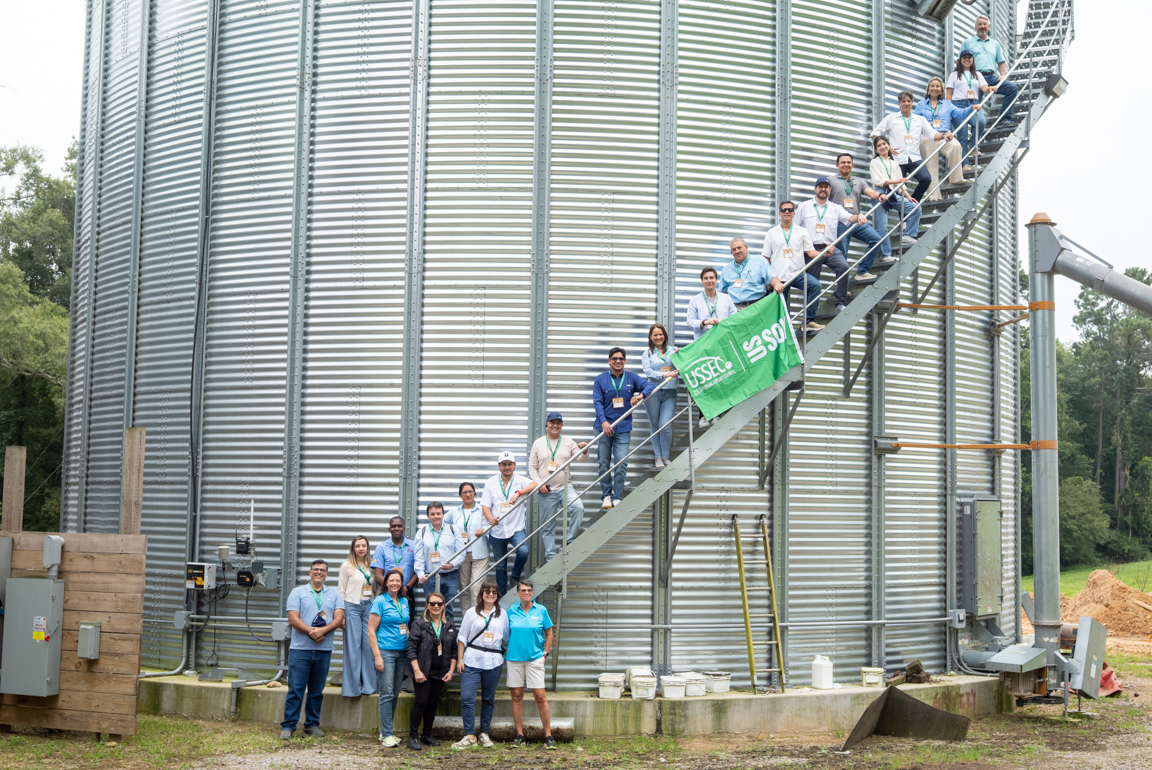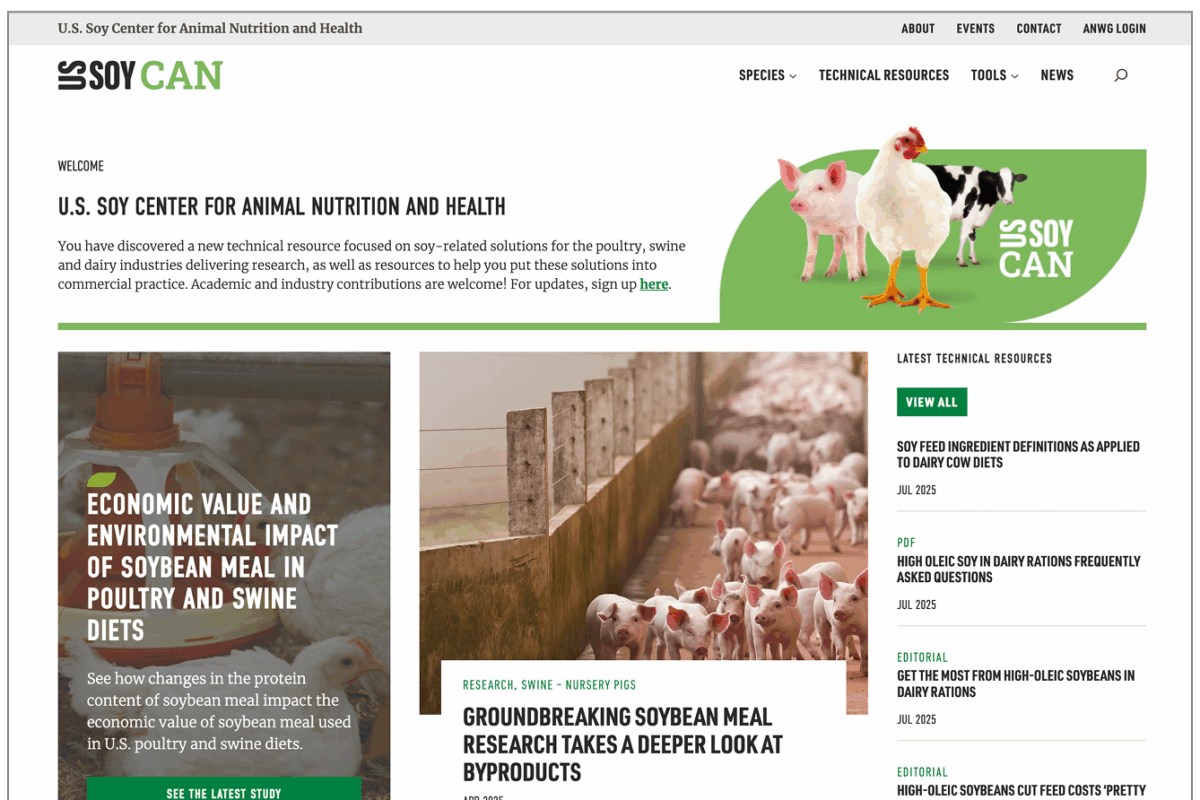U.S. Soybean Meal in Swine Diets Proven to Have Positive Results

Soy checkoff-funded research at Kansas State University found the swine industry significantly undervalues the energy content in soybean meal.
For decades, soybean meal inclusion in swine diets has been on the decline. As nutritionists have adopted the net energy system, soybean meal’s energy contribution has been under scrutiny.
The research at K-State discovered soybean meal, when fed at increasing amounts, increases the net energy value in swine feed to approximately 105-121% of the energy provided by corn. This shows a significant change from the previous assumption that soybeans provided roughly 78% of the energy value as corn.
Typically, soybean meal is seen only as a source of dietary protein, with its high amino acid concentration. However, this new research demonstrates soybean meal contains a noteworthy amount of energy. The results of this research can help rebuild soybean meal’s position in the marketplace.
Sharing the results is the start of increasing market share

David Iverson, soy checkoff farmer-leader from Astoria, South Dakota, believes research like this will provide significant benefits to the soybean industry and the markets for soybean meal.
“It’s exciting to think about the long-term potential,” Iverson said. “As more people in the swine industry become aware and start accounting for soybean meal’s energy in their business, it has great extended possibilities for the soybean industry.”
Iverson sees potential for a tremendous return on investment for U.S. farmers in this type of research. This work will inform industry dialogue by providing evidence that could increase the overall value of soybean meal, enabling regained market share in swine feed. If the approach to measuring energy of soybean meal were to take hold in the U.S. swine industry alone, it could lead to over $250 million in increased value to the soybean industry.
Benefit beyond soybean farmers
It’s not just the soybean industry that will reap the benefits of soybean meal inclusion. Energy can be the single most expensive nutrient in animal diets. Establishing soy as a viable source of energy can be cost-effective for swine producers in the long term.
“I think there can be a cost savings to farmers in the swine industry. They’re currently not fully utilizing soybean products in their diet, and now they can adjust their rations and potentially use less of other feed inputs,” Iverson said. “It’s a great way to increase the amount of soybean meal, but also to show that they’re getting a better, complete nutrition source.”
The checkoff is continuously seeking ways to make U.S. soybeans more profitable while recognizing the positive attributes of soybeans. This happens in part by identifying research areas that are most impactful in solving real industry challenges.
“Research like this shows the true value of soybean meal and soybean products by having independent, unbiased studies that identify the benefits we have not been aware of before,” Iverson said.
Good for soybeans home and abroad
Bringing forth beneficial and profitable research expands markets for soybeans in areas otherwise neglected.
“This is a good opportunity domestically and internationally. Both markets are essential to the soybean industry,” Iverson said.
Increasing inclusion in domestic swine diet formulations means more soybean meal sold in the U.S. and some insulation from international pressures.
“If we can expand our domestic consumption of soybean meal, that’s extremely important as it doesn’t depend on trade issues,” Iverson said. “But if we can also expand our international consumption within the swine industry, that just creates a whole new market revenue stream for soybeans.”



